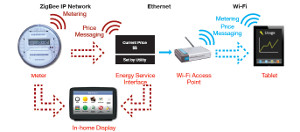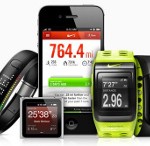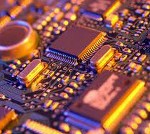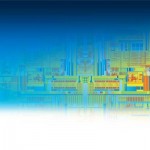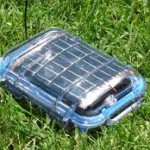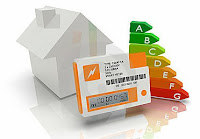The new PSoC-4 BLE series of programmable system-on-chip devices from Cypress enables system designers to create low-power, sensor-based wirelessly-connected systems using integrated programmable analogue front ends, programmable digital peripherals – industry-leading CapSense touch sensor capability for user interfaces all integrated together with a Bluetooth 4.0 (Bluetooth Low Energy) radio and an ARM Cortex-M0 microcontroller in a compact and cost-effective single-chip solution.
This highly-integrated one-chip Bluetooth Low Energy platform enables you to easily design low-power, wirelessly-connected solutions that are particularly well suited to real-time, low-power Internet-of-Things applications.
Bluetooth Low Energy has several potential benefits over Wi-Fi in some wireless connectivity applications, including minimal connection latency and very good energy efficiency, allowing for “always-on” smart, connected devices that run off small batteries for many months or even more than a year while seamlessly being embedded into everyday physical objects and the environment around us.
This makes the platform ideal for IoT end-node applications despite offering data rate and throughput that is lower than in Wi-Fi-based solutions. By combining the Bluetooth Low Energy radio with a 32-bit ARM Cortex-M0 processor in a single chip and adding flexible general-purpose analogue and digital peripherals – the PSoC 4 BLE platform aims to provide the right combination of processing horsepower and low power consumption with flexible and precise interfaces for external peripherals such as ADCs and sensors.
You can interface your Bluetooth-connected system with multiple different sensors easily by integrating custom analogue front ends and programmable digital peripherals around the high-performance 48 MHz ARM Cortex-M0 processor core, with no need for any extra chips.
The PSoC 4 BLE platform includes the Bluetooth Low Energy Protocol Stack and Profiles in an intuitive and easy-to-use GUI-based configuration tool, simplifying the design of your BLE systems. The PSoC 4 BLE chipsets reduce the complexity of RF antenna-matching network design by including an integrated balun, which also helps reduce the component count and the PCB footprint of your system.
A PSoC 4 BLE development kit has been designed by Cypress to allow for maximum flexibility in your design whilst also being as easy to use as possible and offering compatibility with standard Arduino-compatible “shields” when used in conjunction with appropriate software.
This development kit is built around easy to use PSoC 4 BLE and PRoC (Programmable Radio-on-Chip) BLE development modules which are complete, self-contained systems that include the main chip with all its I/O pins exposed for development, a tuned PCB antenna on board, power circuitry and easy access to programming pins.
You can simply hook up some sensors, LEDs and a coin-cell battery and you’re ready to go with your complete single-chip Bluetooth LE-enabled wireless sensor network device with analogue and digital acquisition on board. You can even design reliable, sophisticated and sleek user interfaces with Cypress’ CapSense capacitive touch-sensing technology, delivering superior noise immunity, water tolerance and proximity sensing in touch-sensitive applications such as user control panels.
Furthermore, these modules are FCC certified, so they can be deployed in your commercial products without requiring the certification that you may require for a bespoke RF design to meet FCC Part 15 regulatory requirements. These Cypress PSoC 4 BLE modules also meet CE and Canadian RSS-210 radio certification standards, so they’re ready to go into these markets in your commercial designs.

The Bluetooth Low Energy Pioneer Kit from Cypress enables customers to evaluate and develop BLE projects using the Cypress PSoC 4 BLE and PRoC BLE devices. The low-cost BLE Pioneer Kit includes example projects for common BLE profiles and example smartphone apps for both iOS and Android with full source code provided, allowing you to get up and running in no time with the development of Bluetooth Low Energy solutions for IoT applications.
You can design complete, sensor-based BLE systems easily with Cypress PSoC Creator, taking advantage of its vast catalogue of pre-characterised and production ready PSoC firmware “components” which enable you to concurrently design hardware and firmware with easy drag-and-drop assembly of modular software. For example, the Bluetooth Low Energy 4.1 specification has been abstracted into the new Bluetooth Smart “component” in PSoC Creator.
The Cypress PSoC 4 BLE development kit includes a Bluetooth Low Energy USB dongle that pairs with the CySmart BLE master emulation tool from Cypress, converting your Windows PC into a powerful Bluetooth LE debugging environment.
The kit design and layout allows for customers to easily develop embedded solutions that require both mixed-signal analog and digital capabilities along with wireless Bluetooth LE connectivity and highly optimised power efficiency without sacrificing microcontroller performance.
The development kit supports system-level designs using the Cypress PSoC Creator development environment, which includes numerous example projects to enable you to get started creating Bluetooth Low Energy connected, mixed-signal analogue embedded designs such as wireless sensor networks and IoT product designs as easily and as quickly as possible.
If this platform is of interest to your organisation – and you need an experienced partner to progress with – join us for an obligation-free and confidential discussion about your ideas and how we can help bring them to life – click here to contact us, or telephone 1800 810 124.
LX is an award-winning electronics design company based in Sydney, Australia. LX services include full turnkey design, electronics, hardware, software and firmware design. LX specialises in embedded systems and wireless technologies design.
Published by LX Pty Ltd for itself and the LX Group of companies, including LX Design House, LX Solutions and LX Consulting, LX Innovations.

